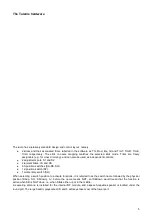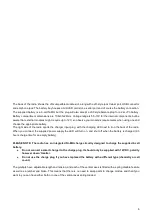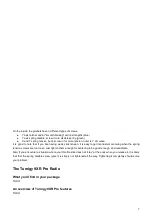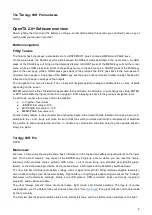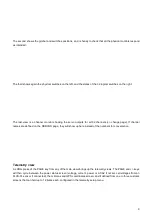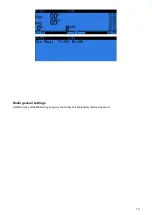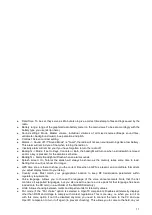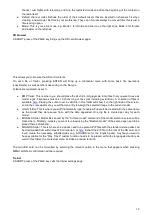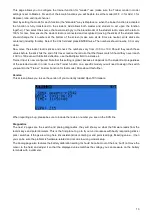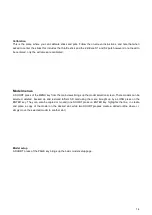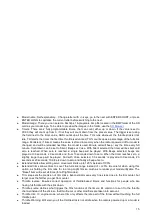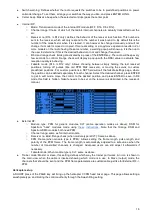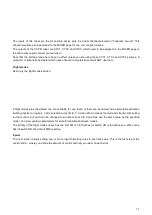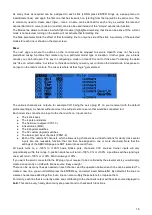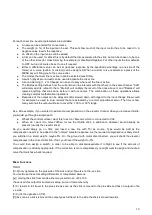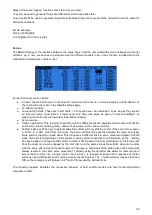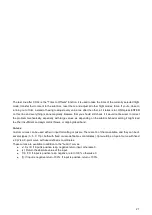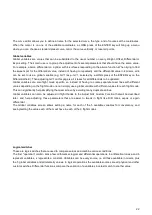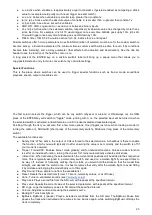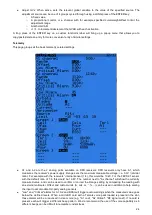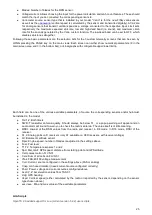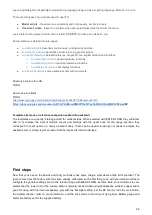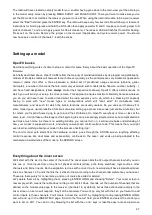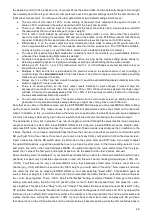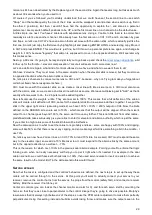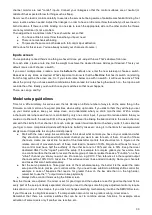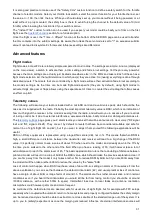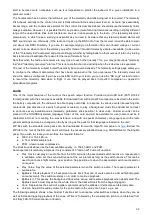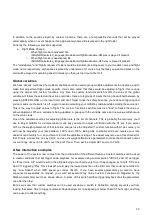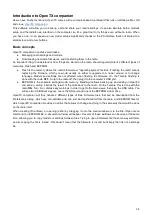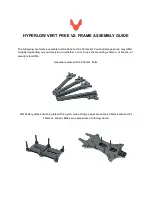
For each mixer line, several parameters are available:
●
A name can be entered for convenience
●
The weight (in %) of the input can be set. This sets how much of the input control has to be mixed in. A
negative value inverts the response.
●
An offset on the input value can be added.
●
A trim can be used, for sticks this is by default the trim associated to the stick, but can be chosen to be one
of the other trims (for cross-trimming for example) or disabled altogether. For other inputs the trim defaults
to OFF, but can of course be set to one if required.
●
Either a differential value can be set (reduces response by the specified percentage on one side of the
throw) or a curve (built-in or custom) can be assigned. When a custom curve is selected, a press of the
MENU key will bring you to the curve editor.
●
The modes the mixer line is active in can be selected (see D/Rs).
●
A switch (physical or virtual) can be used to activate the mixer line.
●
A sound warning (1, 2 or 3 beeps) can be set to play whenever the line is active.
●
The Multpx setting defines how the current mixer line interacts with the others on the same channel. "Add"
will simply add its output to them, "Multipl" will multiply the result of the lines above it, and "Replace" will
replace anything that was done before it with its output. The combination of these operations allows
creating complex mathematical operations.
●
Response of the output can be delayed and/or slowed down with regard to the input change. Slow could
for example be used to slow retracts that are actuated by a normal proportional servo. The time is how
many seconds the output will take to cover the -100 to +100% range.
As a little example, if you wanted to add some compensation on the elevator channel when you increase throttle,
you would go through a simple path:
●
What's the control surface I want this to act on? Elevator, which is connected to CH2.
●
When do I want it to move? When I move the throttle stick, in addition to whatever would already be
present (usually the elevator stick).
So you would simply go on CH2, and insert a new line with Thr as source. Type would be Add as the
compensation needs to be added to the "normal" elevator response. As the required compensation is likely small,
you will dial in a small weight, maybe 5%. On the ground with motor disconnected, you will check the elevator
compensates in the correct direction. If not, you'll invert the weight to -5%.
You could then assign a switch, in order to be able to activate/deactivate it in flight to see if the amount of
compensation is actually appropriate. If the correction is more complicated, you might want to assign and create a
curve that matches what's required.
Mixer Functions
TODO
(X>0) only operates on the plus side of the sick and (x<0) works on the -ve side.
You could use these for setting differential or complicated ailerons.
([x]) moving the stick from centre either way results in an of 0/+100
I have used this output for someone's setup, but can't remember why.
(F>0) results in full travel to the plus side as soon as the stick is moved to the plus side and has no output on the
-ve side.
(F<0) it's the opposite of (f>0).
([f]) as soon as a stick is moved the output goes full travel to the side the stick is moved towards.
19
Summary of Contents for OpenTX 2.0+
Page 41: ...41...
Page 47: ...Taranis Updating internal XJT module firmware 47...

